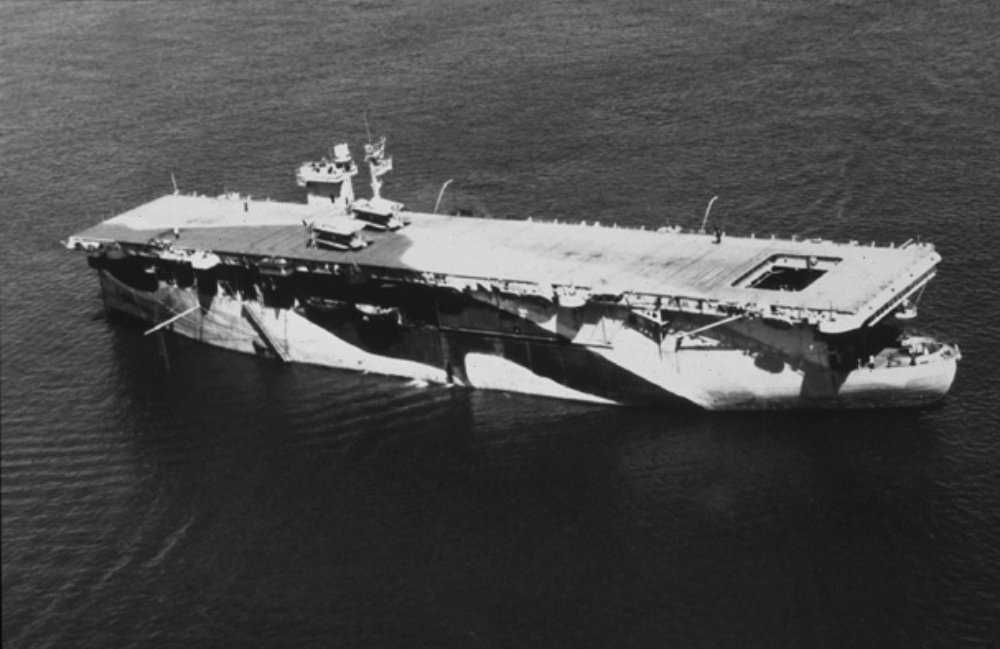On 27 March 1943, Royal Navy Avenger-class escort carrier HMS Dasher (D37) suffered a major internal explosion and sank in the Firth of Clyde, midway between the Isle of Arran and Ardrossan.
The vessel was built by the Sun Shipbuilding Company in Pennsylvania as a passenger and cargo ship and was launched on 11 April 1941. Later converted into an escort carrier at the Tietjen & Lang shipyard in New Jersey, it was then transferred to the Royal Navy and commissioned into service as HMS Dasher (D37) on 2 July 1942 under the ‘Lend Lease’ scheme.
Since the Avenger-class escort carriers were converted American merchant ships, they were not built to the same specifications as Royal Navy and US Navy vessels. Fuel storage and leaking fuel tanks were major issues, and Dasher had to be held at Tietjen & Lang shipyard until August 1941 to fix a number of defects.
Before sailing for Operation Torch, additional modifications to Dasher’s fuel supply and magazine were carried out at Greenock. During the operation, Dasher along with its sister ships Avenger and Biter supported the Allied landings in North Africa in November 1941. On 15 November Avenger was sunk by German submarine U-155 off the coast of Gibraltar with only 12 out of a crew of 528 surviving.
Following Operation Torch, Dasher sailed to Liverpool for engine repair work after which Dasher sailed north to escort convoys bound for Russia. While operating off the coast of Iceland in February 1943, Dasher suffered heavy weather damage and was forced to sail to Dundee for repair work. After the work was completed Dasher sailed for the Clyde, arriving at Greenock on 23 March.
On 27 March 1943, Dasher was out in the Firth of Clyde conducting exercises with the ship’s embarked Sea Hurricanes and Swordfish aircraft, possibly in preparation for a strike against the German battleship Tirpitz in Norway which was a major threat to the convoys. After training was completed for the day, Dasher began to head back to Greenock when an explosion occurred around 16:40, followed by a second explosion that lifted the ship’s two-tonne aircraft lift 60 feet into the air. By 16:48, Dasher had sunk.
Out of the 528 personnel on board, only 149 survived, with 379 killed in what was one of Britain’s worst naval disasters in home waters. However, due to wartime censorship and secrecy, very few details about the sinking were made public at the time. Many families of the victims were not informed about their fate until months later. Some bodies were never recovered and many were buried anonymously or without proper identification.
The exact cause of the explosion remains unclear. Some theories suggest sabotage, faulty fuel valves, sparks from electrical equipment, or static electricity as possible triggers. A court of inquiry concluded that it was an accident caused by “a defect which could not have been detected,” but some survivors and the families of those lost have disputed this finding.
The List of Admiralty Records (1942-1943), volume 6, Admiralty and Secretariat Papers states: “H.M.S. Dasher sunk by enemy action: next-of-kin informed; Review of Admiralty policy regarding degree of information given to next-of-kin when informed of their loss.”
Questions also remain over the location of the unmarked graves where many of the bodies that were recovered or washed ashore were buried.


